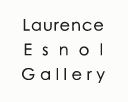Commentaire d’œuvre 8 > Justice delayed is justice denied – DONGNI HOU


Cette grande œuvre de Dongni Hou est une tempera sur toile. La technique, que nous avons détaillée dans un précédent commentaire sur une autre œuvre de l’artiste, est celle qu’elle privilégie pour plus d’aisance et de légèreté dans le geste : une certaine spontanéité ressort de l’usage que fait Dongni Hou de la tempera.
En cette grande toile verticale demeure un corps puissant de femme, debout, tenant l’épée et levant la balance. Cette personnification de la justice, le regard droit, la jambe en contrapposto stable et élégant, est vêtue d’un voile translucide et d’un semblant d’armure, plus décorative que défensive. Autour d’elle, les marches et les colonnes d’un temple grec à chapiteaux corinthiens s’élèvent, il est antique et fantasque, gris comme un éclair de lune. L’allégorie semble être une apparition fantomatique dans ce décor de théâtre, comme le commandeur, fait femme, d’un Don Juan revisité.
La seule puissance silencieuse de la figure qui se dresse au premier plan de cette toile suffit à convoquer l’image d’une Athéna Parthénos : celle qui gardait et ornait le temple le plus connu de Grèce était alors chryséléphantine, c’est-à-dire faite d’or et d’ivoire. Ici, notre guerrière à l’inévitable lutte semble faite de Lune et d’argent, veillant au respect du monde, sans répit et sans repos. Elle est digne et fière, fatiguée, sans doute, mais éternellement jeune : elle ressemble à ces êtres qui ne meurent pas.
Laure Saffroy-Lepesqueur
This large work by Dongni Hou is a tempera on canvas. The technique, which we detailed in a previous commentary on another work by the artist, is the one she favors for more ease and lightness in the gesture: a certain spontaneity emerges from the use made by Dongni Hou of tempera.
In this great vertical canvas remains a powerful female body, standing, holding the sword and lifting the scales. This personification of justice, the straight gaze, the leg in a stable and elegant contrapposto, is dressed in a translucent veil and a semblance of armor, more decorative than defensive. Around it, the steps and columns of a Greek temple with Corinthian capitals rise, it is ancient and whimsical, gray like moonlight. The allegory seems to be a ghostly apparition in this theatrical setting, like the commander, made woman, of a revisited Don Juan.
The only silent power of the figure which stands in the foreground of this canvas is enough to summon the image of an Athena Parthenos: the one who guarded and adorned the most famous temple in Greece was then chryselephantine, that is to say made of gold and ivory. Here, our warrior, constantly in fight, seems to be made of moon and money, ensuring respect for the world, without respite and without rest. She is dignified and proud, tired, no doubt, but eternally young: she resembles those beings who do not die.
Laure Saffroy-Lepesqueur
